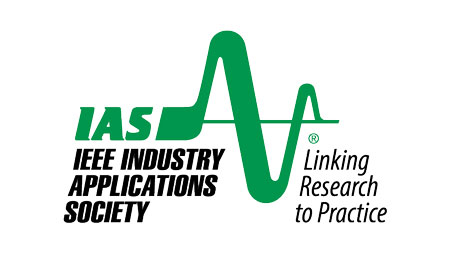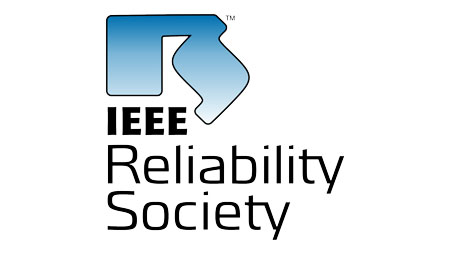Panel 1 – AI and data analytics for energy system operation and management at the edge – Part 1
The proliferation of grid-edge resources and the deployment of advanced sensing and control technologies in buildings and electric power distribution systems calls for novel and coordinated management of these energy systems at the grid edge. This has led to growing interest in the green tech industry and academia on AI and data analytics for better operation and manage these systems in a harmony manner to improve their operation efficiency and resilience while reducing carbon emission. This panel will include experts from academia, national lab and the industry to share unique perspective on the current state of the industry, rapidly evolving landscape of managing these resources at the grid edge, and discuss the challenges and opportunities posed by new technologies and business models.
Panel 2 – AI and data analytics for energy system operation and management at the edge – Part 2
The proliferation of grid-edge resources and the deployment of advanced sensing and control technologies in buildings and electric power distribution systems calls for novel and coordinated management of these energy systems at the grid edge. This has led to growing interest in the green tech industry and academia on AI and data analytics for better operation and manage these systems in a harmony manner to improve their operation efficiency and resilience while reducing carbon emission. This panel will include experts from academia, national lab and the industry to share unique perspective on the current state of the industry, rapidly evolving landscape of managing these resources at the grid edge, and discuss the challenges and opportunities posed by new technologies and business models.
Panel 3 – Harnessing Grid Edge Resources via Grid-Interactive Smart Building Control – Part I
With the acceleration and exacerbation of global climate change, the human society is in dire need of technologies for decarbonization and sustainable development to avoid any irreversible consequences caused to the earth. Meanwhile, the increasing demand and renewable generation penetration are posing challenges for power system operation. Instead of blindly adding new power plants, the advance on the Internet of Things (IoT), edge/cloud computing and communication protocols enable resources at grid edge to be harnessed in a more affordable and extensive manner than ever. Buildings, which account for around 40% of the total U.S. energy consumption, can provide precious untapped flexibility to support the grid when properly coordinated and controlled, solving the “Last Mile” problem in the smart grid paradigm. Though grid-interactive building control presents itself as a promising solution, many challenges exist, and critical questions remain unanswered. For example, what are the urgent needs and challenges in real-world applications? How to implement intelligent building control at scale and without building-by-building customization? How the emerging and promising artificial intelligence (AI) can play a role in building engineering? To answer these questions, the research on grid-interactive buildings is gaining traction and important findings as well as key results are revealed recently. Therefore, the overall objective of this panel session is to present new research insights, technology advances as well as real-world practices/experience for implementing grid-interactive smart building control. Our invited panelists diverse in their affiliations, which include a national lab, a university and building energy management companies. Through this panel session, we would like to present to the audience a comprehensive picture of this emerging area from multiple perspectives and enable constructive discussions and potential future collaborations.
Panel 4 – Harnessing Grid Edge Resources via Grid-Interactive Smart Building Control – Part II
With the acceleration and exacerbation of global climate change, the human society is in dire need of technologies for decarbonization and sustainable development to avoid any irreversible consequences caused to the earth. Meanwhile, the increasing demand and renewable generation penetration are posing challenges for power system operation. Instead of blindly adding new power plants, the advance on the Internet of Things (IoT), edge/cloud computing and communication protocols enable resources at grid edge to be harnessed in a more affordable and extensive manner than ever. Buildings, which account for around 40% of the total U.S. energy consumption, can provide precious untapped flexibility to support the grid when properly coordinated and controlled, solving the “Last Mile” problem in the smart grid paradigm. Though grid-interactive building control presents itself as a promising solution, many challenges exist, and critical questions remain unanswered. For example, what are the urgent needs and challenges in real-world applications? How to implement intelligent building control at scale and without building-by-building customization? How the emerging and promising artificial intelligence (AI) can play a role in building engineering? To answer these questions, the research on grid-interactive buildings is gaining traction and important findings as well as key results are revealed recently. Therefore, the overall objective of this panel session is to present new research insights, technology advances as well as real-world practices/experience for implementing grid-interactive smart building control. Our invited panelists diverse in their affiliations, which include a national lab, a university and building energy management companies. Through this panel session, we would like to present to the audience a comprehensive picture of this emerging area from multiple perspectives and enable constructive discussions and potential future collaborations.
Panel 5 – The critical role of medium-duty vehicle electrification in meeting emissions goals
Although it’s a vehicle category that’s critical to powering last-mile operations, medium-duty EV trucks have been long overlooked due to more complex charging, weight and payload challenges. However, the category has a critical role to play in meeting lofty emissions goals – especially given medium-duty commercial vehicles use over 8 billion gallons of fuel yearly and account for 26% of greenhouse gas emissions in the transportation sector – only second behind consumer cars.
With zero-emission deadlines looming and stricter standards being set, class 4-6 fleets must do more to cut down on their slice of the pie and become a key player in the fight against climate change. Now, it’s medium-duty’s moment to take the mainstage and become a core component of every company’s emissions reduction and sustainability strategies.
Jim Castelaz, Founder & CTO at medium-duty electrification leader Motiv Power Systems, and Jason Appelbaum, Founder & CEO at EV charging solutions company EverCharge, will discuss the scale-up of medium-duty electrification, necessary scale-down of emissions in the category, and what the transition actually looks like in practice – from the vehicles on the roads to the charging infrastructure on the ground.
Panel 6 – Microgrids and DER Integration
Microgrids are becoming more popular with an aging grid and the passage of recent Legislation paving the course for alternative energy solutions. Factors such as increasing occurrences of natural disasters, the ongoing threat of cyber attacks and growing awareness of inadequate, outdated or failing grid infrastructure all compel future development in technology to provide power continuity. Traditional standby generation is no longer adequate. Microgrids provide a platform to keep the power on and operate critical assets over long periods of time while isolated from a damaged or failed grid. Microgrids can generally manage distributed power generation by providing optimal control, dynamic stability and balancing the demand and generation on a small but critical scale. This discussion will explore the building blocks of a microgrid, examine use cases and provide insights to a case study and justification thereof.
Energy Storage- Electrification especially in the transportation industry, takes electricity demands to new levels. Most existing electrical infrastructure was not sized for this emerging trend. A bank of electric vehicle (EV) chargers at a retail facility, for example, could easily double its peak energy demand. Energy storage solutions are needed to power the facility through those new peaks without the hassle, costs and delays that come with infrastructure upgrades. High-power storage battery allows you to shave off peak demand during the day, instantly saving money on monthly utility demand charges. Battery energy storage systems allow EV charging site owners to set the desired maximum power so when a peak period starts, the BESS provides supplemental energy, rather than pulling the entire amount from the grid.
Panel 7 – High Efficiency Electric Motors for Industry and Electric Vehicles – Part I
This two-part panel will highlight and discuss the importance of energy efficiency and power density in electric motor and drive applications, exploring recent examples and ongoing trends with a focus on industrial motors, electric vehicle motors, thermal management, and advanced materials and manufacturing.
Panel 8 – High Efficiency Electric Motors for Industry and Electric Vehicles – Part II
This two-part panel will highlight and discuss the importance of energy efficiency and power density in electric motor and drive applications, exploring recent examples and ongoing trends with a focus on industrial motors, electric vehicle motors, thermal management, and advanced materials and manufacturing.










